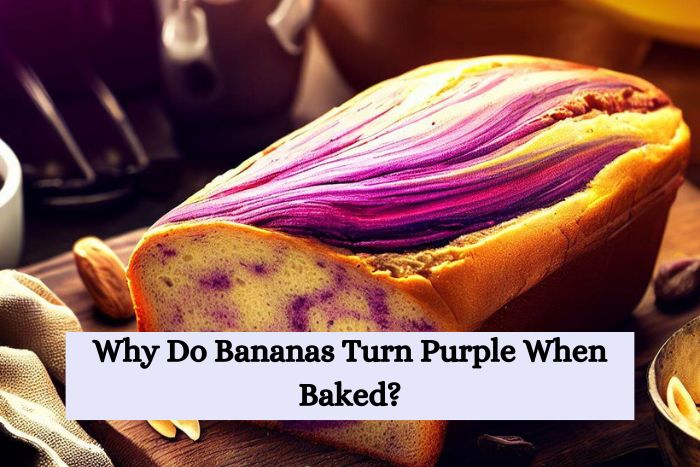If you are fond of baking with bananas, I am sure you must have noticed this strange occurrence.
How does this delicious creamy-white fruit change color?
It’s time to find out why bananas turn purple when baked.
Let me break down the scientific reason for you.
Bananas turn purple due to a simple chemical reaction. The potassium in the fruit reacts with the sugars once any heat is applied, initially turning the banana a pink color. However, the riper the fruit, the more sugar it contains, and the stronger the reaction will be. Hence, a very ripe banana will turn a dramatic shade of purple. This can be an attractive feature of banana bread, as the purple streaks run through the loaf. Neither the taste nor the safety of the fruit is affected, making it perfectly fine to eat.
1. Is Banana Bread Good for You?
You might assume that banana bread is healthy, considering that it contains fruit, but is that actually true?
Let’s delve deep into the subject!
There are undoubtedly some health benefits to banana bread, one of which is the level of protein it contains.
Protein is necessary for muscle growth, repair, and recovery, making it an essential nutrient.
Bananas are fiber-rich, meaning that they can aid in lowering the risk of coronary heart disease, and are easily digested in the form of banana bread.
You can swap the ingredients to match your health preference. For example, substituting butter for coconut oil.
Extra ingredients can be added, such as placing pumpkin seeds on top of the loaf to provide healthy fat.
And who says you have to eat it plain?
For an extra hit of protein, you can spread your slice with nut butter.
So, although the recipe for your bread may seem unhealthy at first glance, with its use of flour, sugar, and butter, the bananas themselves do provide nutritional content.
That’s not to say you can eat as much as you want.
One slice per day is perfect as a snack.
And banana bread does freeze well if you want to make up a batch in advance.

2. Why is My Banana Bread So Dense?
Having discovered that banana bread is good for you, I am sure you are tempted to whip up a batch of deliciousness!
However, despite being such a simple recipe, there are a lot of things that can go wrong with banana bread.
One of the most asked questions is why is my banana bread so dense.
Nobody wants a stodgy loaf that is hard to digest.
The simple reason is that you’re overmixing the batter.
The more you mix the batter, the more gluten develops, which results in a rubbery, dense loaf.
This mistake often occurs if you are using an electric mixer.
You can actually get a fluffier, lighter banana bread if mixing by hand.
Another problem can be a soggy bottom to your loaf, and this happens when you don’t remove it from the tin when it comes out of the oven.
The longer it sits, the soggier it gets.
You should turn it out of the tin straight away and allow it to cool completely on an airing rack.
You’ve Been Making Banana Bread Wrong This Whole Time
Final Thoughts
So, now you know the reason why bananas turn purple when baked.
There is nothing to fear; it’s simply a harmless chemical reaction and can actually make your banana bread look more attractive.
And talking of banana bread, I hope you enjoyed my fun facts, allowing you to make the perfect loaf, and enjoy it as a healthy snack!
Maybe all this discussion on purple bananas has got you wondering why bananas are yellow anyway?
FAQ
- Why do bananas turn purple when baked?
Bananas turn purple due to a chemical reaction between potassium and sugars under heat, especially in ripe bananas. This does not affect their taste or safety. - Is banana bread healthy to eat?
While banana bread contains nutritious bananas, its healthiness depends on the other ingredients used. Substituting healthier ingredients can enhance its nutritional profile, but moderation is advised. - What causes banana bread to be dense?
Dense banana bread is often the result of overmixing, which develops more gluten. Mixing by hand and avoiding overworking the batter can help achieve a lighter texture. - Can banana bread be frozen?
Yes, banana bread can be frozen for later enjoyment. Wrap it well or use a freezer-safe container, and thaw at room temperature when ready to eat. - What can be added to banana bread to improve its healthiness?
Consider adding whole grains, natural sweeteners, and nutritious toppings like nuts or seeds to make banana bread healthier.
